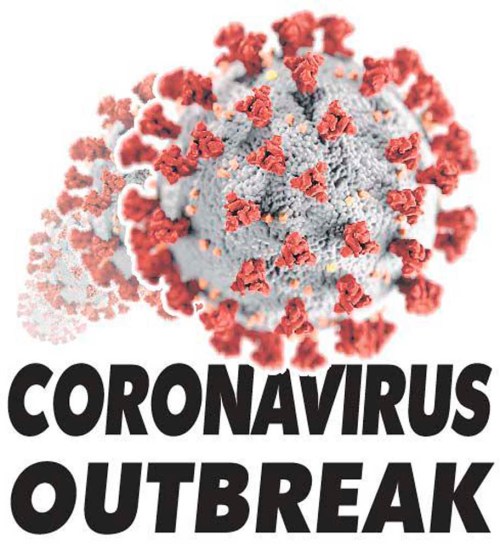Editorial: How the shutdown hurt an ‘essential service’
Published 10:30 am Monday, April 20, 2020

- Coronavirus logo
The good news was that agriculture was designated an “essential service” when the powers that be decided to shut down most of the U.S. economy to protect us from the COVID-19 coronavirus.
The bad news was that most of the customers that farmers, ranchers, orchardists, nursery and timber operators and food processors depend on were shut down.
Trending
The result has been a perfect storm of deteriorating prices, disappearing markets and diminished demand that has left nearly every sector of agriculture reeling.
In the past 20 years agriculture has been through nearly every type of emergency, disease outbreak and “uncertain time,” yet this is the absolute worst. From 9/11 to the isolated mad cow discovery, from the sudden oak death outbreak to the Great Recession, agriculture has persevered. Through trade wars and other disruptions, agriculture has persevered. Through attacks from environmental groups and misguided government officials, agriculture has persevered.
But the COVID-19 shutdown could do more damage than all of those calamities combined.
In the other crises, the damage came on gradually, as foreign markets closed or the overall economy dragged down demand.
With COVID-19, our governors flipped a switch, turning off large portions of the economy — and demand for food, fuel and fiber. It is clear they listened closely to the epidemiologists, but didn’t even ask anyone who knew anything about agriculture.
The result has been a disaster far beyond the scope of the COVID-19 virus itself.
Trending
On the West Coast alone, upwards of 3 million people were thrown out of work within a few days. Nationwide unemployment tops 22 million.
Many of them worked in economic sectors that farmers and food processors depend on such as restaurants and foodservice. When they were shuttered, much of agriculture was decimated.
Of all the 300 or so commodities grown in the Pacific Northwest and California, it’s hard to find one that is staying even, let alone thriving.
On our pages in the past weeks we have reported the damage. The livestock industry — beef, hogs and sheep — has been eviscerated. So have dairy and poultry. So have potato, onion and other vegetable growers as restaurants closed or moved to delivery or drive-thru only.
Even as demand picked up in grocery stores, it could not offset the restaurant and foodservice sectors. Growers of commodities such as potatoes sell 60% of their crop to restaurants and foodservices such as cafeterias. Worse yet, the National Restaurant Association estimates that 15% of those businesses will never reopen.
The damages go beyond food. The nursery and timber industries have been slammed as homebuilders were shut down. No new homes means no demand for lumber and the trees it comes from. No new neighborhoods and parks mean no demand for grass seed and nursery stock.
This is the prime retail season for the ornamental nursery industry, yet consumers have been confined to their homes and told to “stay home and save lives.”
Help is on the way, farmers, ranchers and agribusinesses have been told. Yet the $349 billion in Small Business Administration help dried up in less than two weeks as people grasped at a life preserver.
And the $19 billion set aside for agriculture is still rattling around in the USDA while farmers and ranchers watch their bank accounts — and livelihoods — disappear. The cattle industry alone estimates its losses, both current and future, will be $13.6 billion.
Flatten the economy
One could debate the wisdom of shuttering much of the economy to “flatten the curve” and prevent big-city hospitals from being overwhelmed. But out in the country the COVID-19 has been less than dangerous.
For example, in Oregon, 15 of the 36 counties report five or fewer COVID-19 cases and no deaths.
Most of these counties are economically depressed areas. COVID-19 may not kill any people there, but it could well kill the rural economy. Likewise in eastern Washington, Idaho and other rural parts of the West.
We keep hearing about plans the federal and state governments are formulating to “reopen” the economy. Good.
But the suffering most Americans have seen was not because of a virus. It was because of government overreaction.
In Sweden, leaders resisted calls to shut down the economy. They used common sense instead. Gatherings of more than 50 people were banned and restaurants and bars were told to reconfigure their seating to minimize the risk. Yes, some people got COVID-19, but the economy was not turned into a smoking crater like in the U.S. and other countries.
Who to protect
While for most people COVID-19 means a cough, sore throat and body aches, it does pose a serious threat to senior citizens and anyone who is overweight or has other pre-existing conditions. By all means, those people should be isolated and protected.
Some numbers: In March 2019, 253,000 Americans died. That’s about 57,000 a week. In March of 2020, about the same number of people died, even as COVID deaths increased. According to the Johns Hopkins University of Medicine, as of April 17, 28,998 Americans had died of COVID-19 out of 662,045 cases.
As of April 20, no one in Oregon under 40 years old has died and only 2 people between 40 and 60 years old have died. The rest were over 60. While no death can be ignored or downplayed, the fact that the impact of COVID-19 is mainly age-related should not be.
It should be noted that finding up-to-date figures for March or April is next to impossible, but the latest data from the Centers for Disease Control and Prevention show the number of deaths each week in 2020 has been about the same as or lower than last year’s average.
In those numbers, what, exactly, warranted shutting down the economy and throwing more than 22 million Americans out of work?
We anxiously await the reopening the economy, something that could have — and should have — been avoided.









